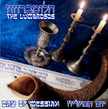… until the time of reformation.
More important than finding the actual Ark of the Covenant, we must understand not only what it stands for but more importantly, what it doesn’t stand for. Let us therefore continue our archeological work of removing the debris of the doctrines of man in order to rediscover the Truth of the Word of God according to its own value.
We have discovered that KJ editors added the word ‘covenant’ in their text of the eighth chapter of the letter to the Jewish believers of Israel. Removing that unfortunate edition, we now read the text not as a dispensational argument, but as a revelation of the meaning of the two chambers of the Tabernacle. Following the same principle we continue onto the thirteenth verse of chapter eight which reads, In that he saith, A new covenant, he hath made the first old. Now that which decayeth and waxeth old is ready to vanish away (Hebrews 8:13 KJV).
Taking the added word ‘covenant’ out, what is it in our text that ‘decays and waxes old’, that becomes in fact obsolete? The terms of the Toratic covenant given on Mt Horeb? How is that possible since the Torah is fixed forever in Heaven (Psalms 119:89)? The Levitical priesthood? How could that be since the eternal Torah says that theirs is a perpetual priesthood (Exodus 40:15)? Aaron’s priesthood only stopped because the Temple was destroyed thirty years after Yeshua’s resurrection, but both the prophets Ezekiel and Jeremiah speak of its reinstitution when the Temple is rebuilt. For that reason, it cannot be the Temple either that has become obsolete in our text. What is it then that ‘decays and waxes old’ becoming obsolete in verse thirteen?
When we read the text without the edition and understanding that ‘first’ and ‘second’ speak of the two section of the Tabernacle, chapter 9 gives us our answer,; it says, Now even the first had regulations for worship and an earthly place of holiness. For a tent was prepared, the first section, …. It is called the Holy Place. Behind the second curtain was a second section called the Most Holy Place, having the golden altar of incense and the ark of the covenant covered on all sides with gold, in which was a golden urn holding the manna, and Aaron's staff that budded, and the tablets of the covenant…. These preparations … their ritual duties, but into the second only the high priest goes, and he but once a year, and not without taking blood, which he offers for himself and for the unintentional sins of the people. By this the Holy Spirit indicates that the way into the holy places is not yet opened as long as the first section is still standing (which is symbolic for the present age). According to this arrangement, gifts and sacrifices are offered that cannot perfect the conscience of the worshiper (Hebrews 9:1-9) (emphasis mine). It is this present age which decays and passes away, that becomes obsolete as the Kingdom of God is slowly but surely established since the manifestation of Messiah.
This present age of the futile rule of man on the earth is coming to an end. We already hear the footsteps of Messiah on the horizon. He is coming to take His Bride and with her establish the Kingdom of His Father on earth. May it come soon, Abba, even in our days!
 RSS Feed
RSS Feed


